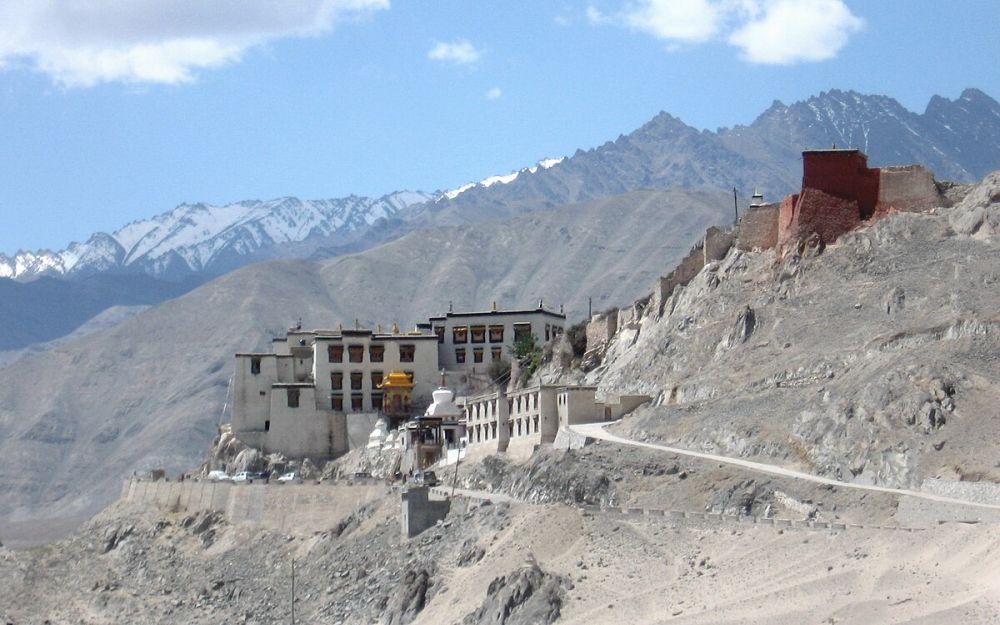

Renowned for its serene ambience and religious importance, Spituk Monastery stands as a testament to the spiritual heritage of Ladakh. Founded in the 11th century by Od-de, the elder brother of Lha Lama Changchub Od, Spituk Monastery, also known as Pethup Gompa among locals, has been a destination for Buddhist pilgrims for centuries. It was later taken over by the Yellow Hat sect, under the revered Tsongkhapa, in the 15th century, marking a significant transition in its religious lineage.
The monastery is perched atop a hill, providing a panoramic view of the Indus Valley below. It holds an illustrious collection of ancient thangkas, statues, and religious scriptures, which have drawn historians and Buddhism scholars alike over the years. The annual Spituk Gustor Festival, held in the eleventh month of the Tibetan calendar, is particularly notable, where the sacred dance of the masked monks or 'Cham Dance' is performed, attracting visitors globally.
Historically, the influx of tourists to Spituk Monastery began to rise significantly in the latter half of the 20th century, when Ladakh was opened to foreign tourists in 1974. The monastery’s ancient artwork, spiritual teachings, and unique location made it a must-visit for those exploring the region’s cultural sites. Over the years, Spituk Monastery has become an integral part of Ladakh’s buddhist circuit tours, which include other renowned monasteries like Hemis, Thiksey, and Alchi.
With the promotion of responsible tourism and Ladakh's evolving infrastructure, Spituk Monastery has witnessed a steady increase in footfall, balancing pilgrimage and exploration. Heritage conservation efforts have been pivotal in preserving Spituk's treasures, allowing future generations to experience its allure.
In recent years, the emergence of sustainable and experiential travel has influenced tourist activities around Spituk Monastery. Travellers are now seeking authentic cultural interactions, opting for homestays in nearby villages to immerse themselves in local traditions and support community livelihoods.
Adventure tourism has also seen a boost, with Spituk serving as a starting point for treks such as the famed Markha Valley. In addition, the Indian government's push for digitalization has made remote destinations like Ladakh more accessible through online permits and improved connectivity.
Photography tours are becoming increasingly popular, as Spituk Monastery offers spectacular vistas and a unique glimpse into Buddhist practices. The rise of social media has further amplified interest in this hidden gem, positioning it as a picturesque backdrop for influencers and travel bloggers.
To accommodate the growing interest, infrastructure around Spituk has seen developments, including better roads and increased number of hotels and guesthouses, albeit with a stronger emphasis on eco-friendly practices to safeguard Ladakh's pristine environment.
For those planning to visit Spituk Monastery, it is important to respect the local customs and religious sentiments. The best time to visit is from June to September, when the weather is most favourable. Visitors are reminded to be mindful of the ecological sensitivity of the region and to leave no trace during their stay in this magnificent part of the world.